Exploring Strasbourg History, a city with a heritage spanning over 2,000 years, presents a fascinating challenge. The tapestry of Strasbourg‘s past is woven with myriad stories and anecdotes waiting to be unveiled. Amidst this vibrant historical tapestry, Strasbourg’s architectural legacy thrives, often hidden in plain sight. Whether around a street corner, within a quaint square, within a church, or discovered during a museum visit, the city’s rich history breathes life into its monuments and churches, creating a deeper appreciation of Strasbourg’s captivating past. Delve into the captivating journey of Strasbourg’s history, where every corner reveals another chapter of its remarkable story.
Strasbourg History
The “city of roads” (the origin of its current name in ancient German) lies at the border of the Roman and Germanic worlds. This location adds to the wealth of its past, for better and worse. After suffering during the 19th and 20th centuries, Strasbourg has regained peace and calm and has earned its name of “Capital of a reconciled Europe”.
1. Strasbourg in Ancient History
The first traces of permanent human settlement on the site of Strasbourg date back to 1300 BC. The Celts developed a city there towards the end of the 3rd century BC and named it Argentorate. Julius Caesar’s Roman troops reached the shores of the Rhine in 58 BC and built a fortified military camp near the city they renamed “Argentoratum”.
Around 20 AD, a growing population of almost 10,000 saw the small city get promoted to the rank of military colony. This was the retreat at each defeat of the Roman army in the regions on the other side of the river. The Romans left Germania in 260 AD. Consequently, Argentoratum became a border city again.
In the 4th century, Roman power on the banks of the Rhine was reduced following repeated assaults by barbarians and Argentorate’s fate was sealed. The Alamans devastated the city in 355 AD. Then, in 451 AD, Attila the Hun destroyed it completely. Legend has it that grass no longer grows where his horse has trodden.
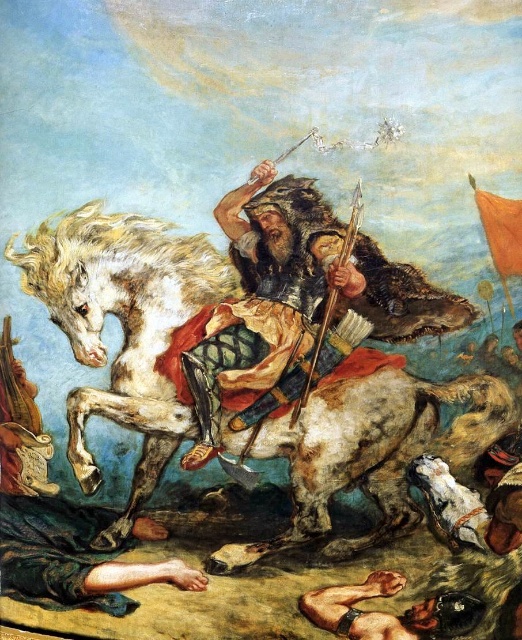
The accession of Clovis and his conversion to the Christian faith allowed many cities to prosper in the shelter of his authority. Argentoratum, renamed Strateburgum by the Franks in 496, was one such city. In the 6th century, the Bishop of Strasbourg was one of the few to establish his authority in the Upper Rhine region. His successors took advantage of the absence of rivals to establish their authority and influence over Alsace and the Baden Plain.
2. Strasbourg in the Middle Ages
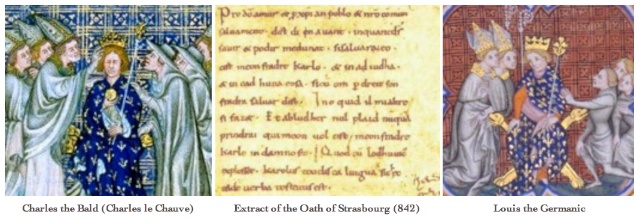
In 842, Charles the Bald and Louis the German concluded the Oath of Strasbourg in the city. They intended to keep their brother Lothair away from the dividing of the Empire that their grandfather, Charlemagne, had left them.
The Oath was the oldest text written in Roman and Germanic languages. The Treaty of Verdun was concluded one year later and placed Strasbourg in the Kingdom of Lotharingia, the ancestor of the Lorraine region.
Following a new change of borders in 870, Strasbourg once again became the possession of Louis the German and leaned towards the Germanic world.

Strasbourg in the Holy Roman Empire
Strasbourg benefited from a long period of expansion and prosperity thanks to obtaining justice and minting rights following Otto the Great’s founding of the Holy Roman Empire in 962.
On the strength of this temporal power, the Bishop of Strasbourg continued to enjoy a strong influence, especially Werner of Habsburg, who decided to construct a Romanesque cathedral in the 11th century.
Towards 1100, the town was protected by a new fortified wall. In 1160, religious authorities decided to replace the Romanesque cathedral with one even more grandiose. They wished to raise a majestic church in the Gothic style, which was popular in Île de France.
At the same time as the crucial demographic growth (the city became one of the most populated in the Holy Roman Empire), several monastic orders, notably Franciscan and Dominican, established themselves here.
In the 13th century, the city extended its surrounding wall, and the defensive towers increased to 80, including the famous Ponts Couverts (Covered Bridges).
Strasbourg: An Imperial Free City
In 1201, Emperor Phillip of Swabia raised Strasbourg to the coveted rank of Imperial Free City under the impetus of wealthy seigniorial Alsatian families.
A Municipal Council was formed in 1220 and was in charge of administration and justice. These duties were previously reserved for the clergy.
The growing influence of the bourgeois threatened the bishop’s authority. It resulted in armed conflicts between the Episcopal army of Walter of Geroldseck on one side and the Strasbourgeois, supported by Emperor Rudolph I of Habsburg, on the other side.
The outcome of the Battle of Hausbergen in 1262 was disastrous for the bishop, who lost his influence. Following this episode, the 14th century was the stage of many political schemes.
Within the city, two rivalling noble families, the Zorns and the Mullenheims, confronted each other. They provoked a civil war in 1332, resulting in the rise in power of the working class and its takeover of the city.
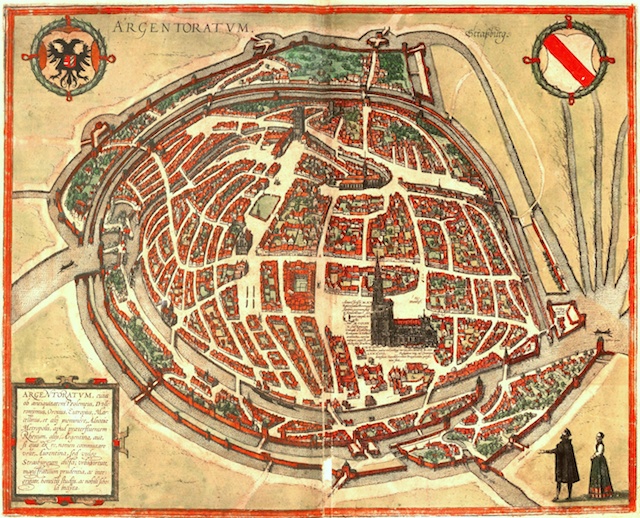
When the Great Plague reached the city in the 14th century, pogroms increased. The Jews were accused of having poisoned the city’s well. In 1349, more than 2,000 Jews were burned alive on the current site of Rue Brulée.
An autonomous and influential city
The Imperial Free City of Strasbourg profited from its autonomy and the right to raise taxes and mint coins to prosper. It benefited from a central crossing point for the freight of merchandise (the Ill River connects it to Colmar, and the Rhine links it to the other large cities of Basle, Mainz and Cologne). The town did not baulk at the different taxes and controls imposed by the powerful Guild of Boatmen.
With a substantial population of 26,000 inhabitants (10,000 of which were refugees of the Hundred Years War who resided outside the fortification), Strasbourg was able to raise an army of 4,500 men.
At this time, Gutenberg, originally from Mainz, came to stay in Strasbourg and invented movable printing. Shortly after, the city became a significant printing centre in Europe and began to attract many intellectuals and artists.
A religious city
In the late 14th century, the town underwent further expansion. Monks and noble families founded numerous churches across the city.
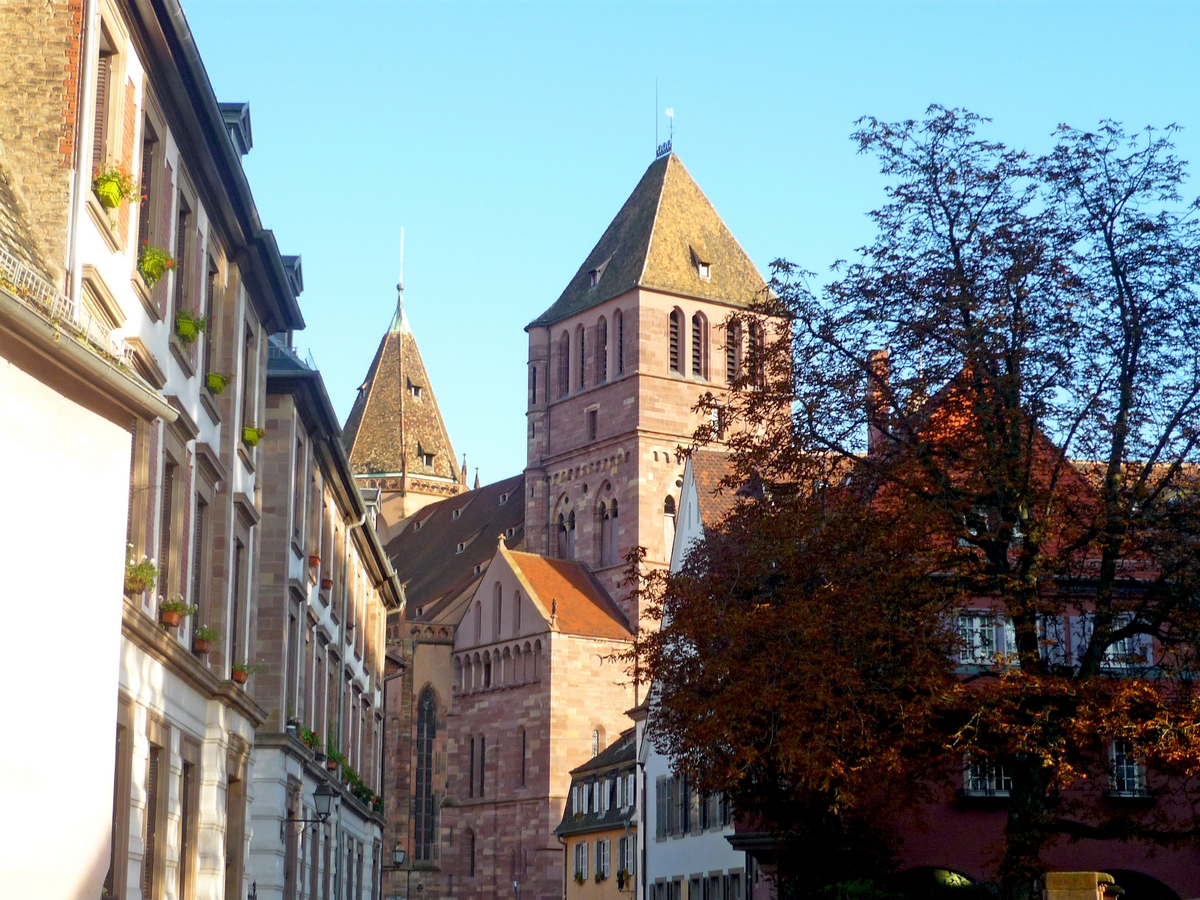
Some of the oldest ones include Saint-Pierre-le-Vieux, Saint-Pierre-le-Jeune, and Saint-Thomas. About twenty convents were constructed alongside these churches.
The cloisters of Sainte-Madeleine and Saint-Pierre-le-Jeune churches still exist today. By 1441, a new granary emerged due to increasing demand.
In 1439, after four centuries of construction, the architects completed the spire of Notre Dame Cathedral. It was the tallest monument in Christendom during that period and symbolised the city’s power.
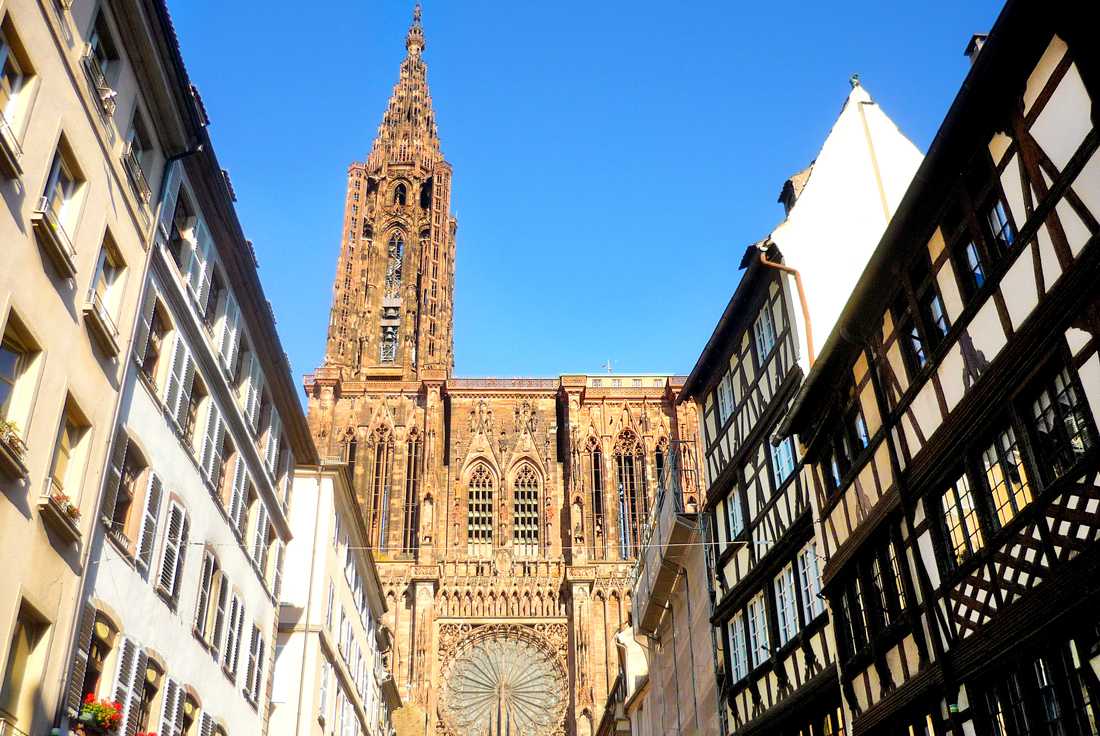
3. Strasbourg, Centre of Humanism and Reformation in Europe
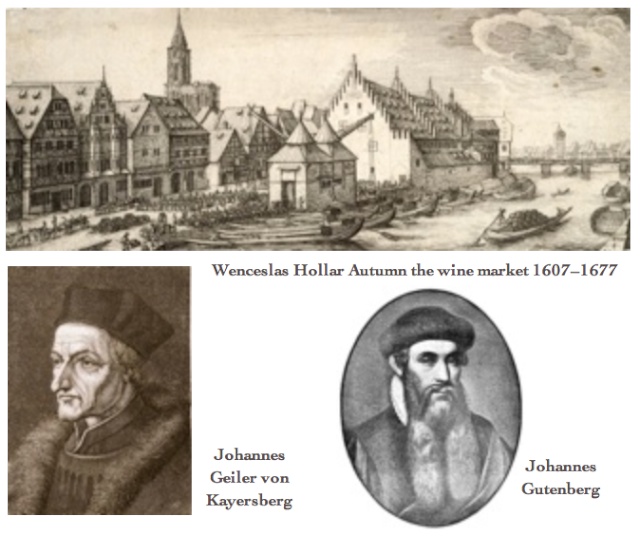
In the early 15th century, the humanist movement took advantage of printing development. Its leading advocates were Jakob Wimpheling, Geiler von Kayserberg, and Sébastien Brant.
Another highlight of this century of change was the marked introduction of the Reformation. Strasbourg adhered to Protestantism from 1525, some six years after the Theses of Martin Luther were attached to the cathedral’s doors.
Strasbourg officially became Protestant in 1532 with the adhesion to the Augsburg Confession. Along with Basel, Montbéliard, Mulhouse and Zurich to the south of the Upper Rhine region, Strasbourg was one of the main bastions of Protestantism. At the same time, the rest of Alsace remained Catholic and loyal to the Habsburgs. The cathedral, as well as other churches in Strasbourg, held Protestant services.
The city became a haven for Huguenots, Protestants driven out of France for their beliefs. Among them was John Calvin, who later settled in Geneva.
Naturally, Strasbourg’s behaviour was not to the taste of Charles V of the Habsburg dynasty. The Holy Roman Emperor was indeed an ardent defender of the Catholic faith who repeatedly entered into war against the Protestant Princes.
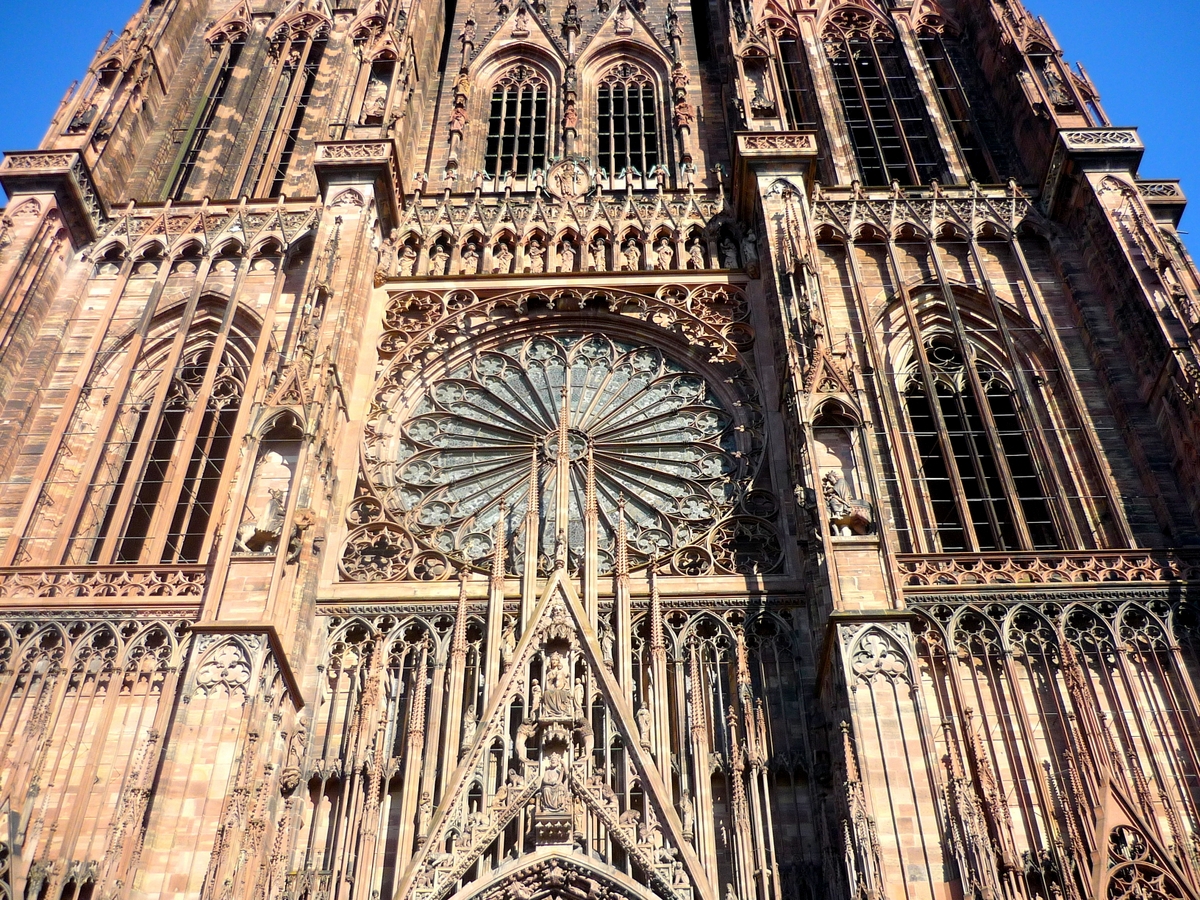
In 1592, the use of the cathedral, a strategic issue, was shared between the two religions and two bishops of each obedience were appointed. Conflicts between the two faiths intensified, and in 1604, the Catholic Charles of Lorraine became the one and only bishop of the city.
The Thirty Years’ War (1618-1848)
With the Thirty Years’ War eruption, Strasbourg and Alsace found themselves in the line of fire. While the Swedish savagely ravaged the province of Alsace in 1633, Strasbourg did not suffer the same fate.
In fact, the city was retrenched behind its modern fortifications. Eventually, Strasbourg agreed with Emperor Ferdinand II, vowing not to participate in the conflict and to remain neutral. The Emperor’s compensation was the authorisation for Strasbourg to found a university.
4. Strasbourg becomes a French city
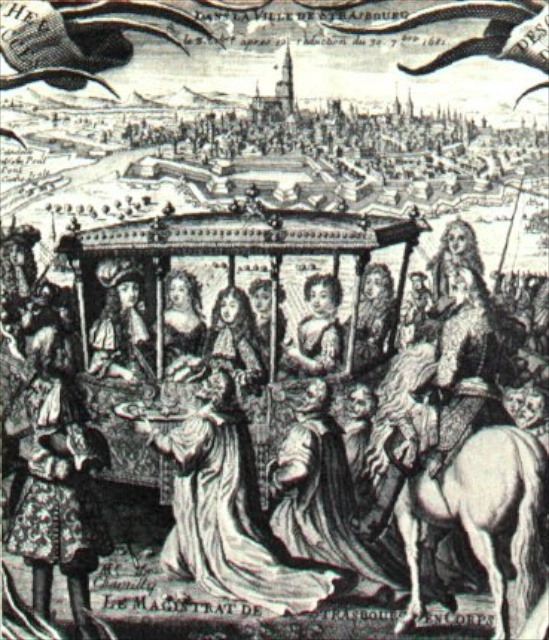
With the Treaties of Westphalia negotiations in 1648, the Habsburgs lost their hereditary possessions in South Alsace (the Sundgau) to the profit of the Kingdom of France. But Strasbourg remained an Imperial Free City. On 28 September 1681, Louis XIV’s army besieged the city and, two days later, accepted the surrender and became French for the first time in its history.
Louis XIV demolished part of the fortifications to symbolise the reunion of Strasbourg to France and the return of the cathedral exclusively to the Catholic religion.
Negotiations between Strasbourg and the Sun King preserved certain freedoms of the former Free City, notably on political, administrative and religious levels. Vauban was commissioned to construct a defence system at the forefront of what was done at the time (a large part of these fortifications are still visible today).
In 1716, the city adopted the French monetary system and housed a sizeable French garrison.

The French capital of Alsace
Having become French 33 years after the Upper-Alsace of the Habsburgs (the Sundgau), Strasbourg was given the title of capital of the Alsace province, which had never been unified. With the other side of the Rhine remaining Austrian (Offenburg and the Brisgau), Strasbourg found itself once again lined by a border and became the main crossing point to Germany.
In religious terms, the town took a critical turning point. In 1704, a prince of the Rohan family became bishop of the town. The family retained episcopal power until 1790 and built the famous Palais des Rohan (or Rohan Palace) close to the cathedral. Situated on the banks of the River Ill, the palace is the witness of the prosperous 18th century in Strasbourg.
Throughout this period, Catholicism developed, and six Catholic parishes were established. However, the town remained nonetheless predominantly loyal to Protestantism.
An influential university
The University of Strasbourg, dormant after its annexation by France, gradually regained its former glory.
Between 1721 and 1755, the city hosted over 4,000 students. The university boasted an international outlook, with foreign students from Germany, Scandinavia, the Netherlands, Great Britain, and Russia.
Some, like Goethe, who studied law here, gained fame. Strasbourg’s university’s reputation is strong, especially in law and medicine.
Despite a 15th-century surgical school, Strasbourg lingered in Basel University’s shadow. However, in the 18th century, its practical teaching propelled it to prominence as a major university centre.
The French Revolution
During the French Revolution, the Storming of the Bastille on 14 July 1789 sent a shock wave through Strasbourg when its inhabitants devastated the City Hall seven days later. As elsewhere in France, clergy property was confiscated.
However, the tension rapidly declined until 1792, the year of the declaration of war opposing France to Prussia and Austria.
On 26 April, the mayor of Strasbourg, Frédéric de Dietrich, asked Rouget de Lisle to compose a hymn to the glory of the Army of the Rhine. Volunteers from Marseille returned to their city with the hymn and made it known across France. The song naturally took the name “la Marseillaise”.
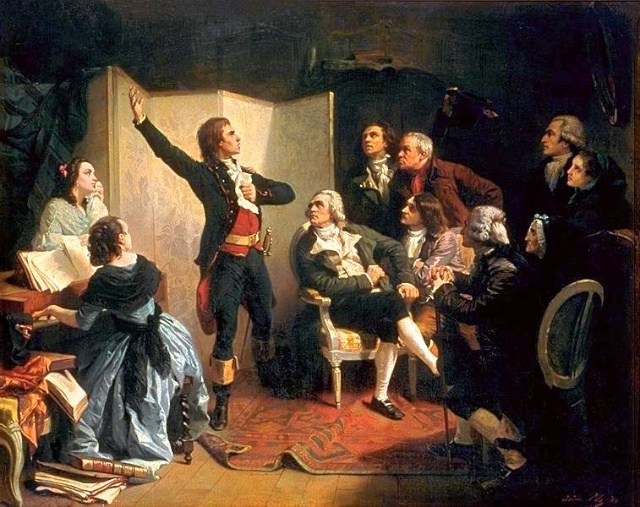
The Terror in Strasbourg
If a notice on the boundary bridge of the Rhine proclaimed, “Here begins the country of freedom”, the period of the Revolution – notably that of the Reign of Terror – was not as inspiring. Mayor De Dietrich was guillotined in 1793, and Catholic and Protestant religions were banned. The cathedral’s spire escaped destruction during the Revolution. It was saved thanks to the disguised idea of a Strasbourgeois covering its point with a huge Phrygian cap to the glory of the emerging Republic.
In 1797, the French army crossed the Rhine and occupied the neighbouring German cities of Kehl and Offenburg. The construction of a new bridge over the Rhine and Napoleon’s complete reorganisation of the administrative territory followed.

Strasbourg in the Napoleonic Empire
At the beginning of the 19th century, the city’s appearance remained unchanged, nestled within its walls.
In 1805, during Empress Joséphine’s stay in Strasbourg, the creation of an orangery began, now known as the Parc de l’Orangerie.
In 1808, the University of Strasbourg reopened its doors. Later, three significant foundations abandoned during the French Revolution were reinstated: the Œuvre Notre-Dame Foundation, the Civil Hospices, and the Saint-Thomas Foundation.
The city appeared to regain some stability until the start of the 1814 Campaign of France. Strasbourg was blocked for three months, and a typhus epidemic spread.
The Warehouse of France during the Industrial Revolution
In 1818, when an agricultural crisis was rife, tensions between Catholics and Protestants mounted dangerously.
Despite challenging circumstances, significant developments occurred in Strasbourg during the 19th century. Starting from 1840, the quays were gradually redesigned, and several buildings were constructed. A restoration plan for Notre Dame Cathedral was initiated due to the destruction of numerous sculptures during the French Revolution and the deteriorating condition of the structure.
This occurred on the brink of the Industrial Revolution, and Strasbourg earned the nickname “warehouse of France”.
The tobacco factory built in 1811 played a central role in the flourishing commercial activity involving the transit of wine, spirits, cotton, spices, sugar, and tobacco.
Strasbourg’s position on the Rhine during the Industrial Revolution allowed the city to develop, thanks to the development of port zones. The Marne-Rhine Canal, which links Strasbourg to Paris via Nancy, was constructed, and the railway line from Paris to Strasbourg opened in 1847. The electric telegraph followed five years later.
While Mulhouse, in Southern Alsace, experienced a real industrial boom (nicknamed “the Manchester of the South”), economic activity in Strasbourg turned towards commerce and finance. And there were, of course, some Strasbourgeois industries that specialised in beer production.
5. Strasbourg annexed by Germany

But the great upheaval that Strasbourg experienced in 1681 at its return to France was relived in 1871, some 190 years later, with the Franco-Prussian War. Following the siege by the Prussian army, the city surrendered on 28 September under the strikes of artillery bombardments and was linked to Germany by the Treaty of Frankfurt.
Strasbourg was established as the “Capital of Reichsland of Alsace-Lorraine”. Using the word “Lorraine” is a misnomer because the annexed Lorraine territories only represent a third of the Lorraine region, that is, the current département of Moselle with Metz as its head city.
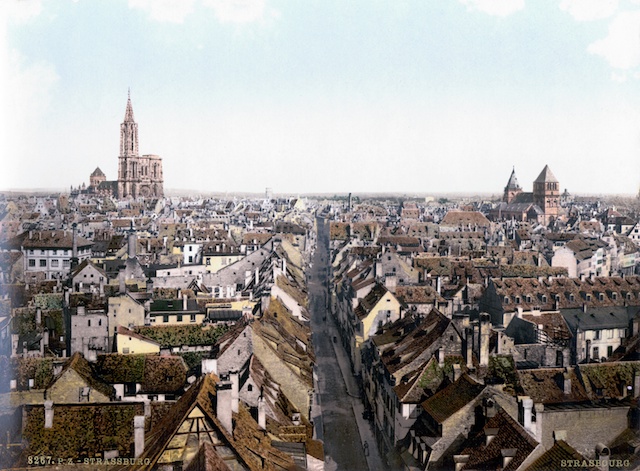
The Neustadt or German Imperial District
The new German authorities wanted to showcase Strasbourg’s power and tried several times to win the hearts of its inhabitants, who were traumatised by the war. Thanks to the willing action of the Prussians and an ambitious urban development plan (the “Neustadt”), Strasbourg again found the path to prosperity. Particular attention was given to hygiene: running water appeared in 1878, and road cleaning services appeared in 1909.
While many Alsatians chose exile in France (to Belfort, Nancy or Paris) over the German nationality in 1871, the city continued to expand and obtain a population of almost 100,000 thanks to the immigration of German families and the rural exodus.
6. Strasbourg becomes French… and then German again
The First World War brought an end to this prosperity. Strasbourg, however, was not touched by the fighting and found itself outside the conflict zones of Verdun and the Somme.
The end of the war and the Treaty of Versailles confirmed the return of the Alsatian capital to France. Paradoxically, joining Strasbourg (and also of Alsace) to France posed several problems, especially regarding adjustment.
The Strasbourgeois campaigned to obtain some recognition of their local status concerning Alsatian administration and dialect. Cultural life was partly suppressed by linguistic pressure from French authorities confronted by regional culture.
The city regained certain prosperity during the interwar period, again thanks to its geopolitical location as a border city and as the location of the river port on the Rhine with an international status.
Strasbourg History during WW2
On 3 September 1939, the date of the declaration of war by France and the United Kingdom (the Allies) on Nazi Germany, the French government ordered the evacuation of the city.
More than 120,000 people fled and took refuge in the Dordogne, the Landes, or even the Gers départements. Almost two-thirds returned to Alsace after the armistice signing between Germany and France in August 1940.
However, everything had changed: the Germans had annexed Alsace and had linked it to the land of Baden to form the “Gau Oberrhein”, with Strasbourg as its capital. Hitler had mandated (without follow-up) his architect Albert Speer to transform it into a great metropolis deployed on both sides of the Rhine.
An attempt to Germanise Strasbourg
To “Germanise” Alsace, the occupiers needed to resort to drastic measures.
The Alsatians were considered German citizens (Volkdeutsche). The use of French was banned and was a punishable offence. Again, German became the obligatory language, with street names translated and displayed in German.
The young Strasbourgeois suffered the same fate as the rest of the young men of Alsace and Metz: compulsory conscription to the German army. And since they could not be trusted, Nazi command sent them to the Russian frontline, where few returned safe and sound. This tragic wartime episode gave them the name “Les Malgré-Nous” (“despite our will”).
The Allied bombings of the Strasbourg region began in 1943 and damaged several of the city’s monuments, including the cathedral, Rohan Palace, and the Old Customs.
The Liberation of Strasbourg
Strasbourg was liberated on 23 November 1944 by General Leclerc and the tanks of the 2nd Armoured Division, and the French flag flew once again at the top of the cathedral. The liberation occurred well before Colmar and the rest of the Haut-Rhin département, where the Germans did not surrender until 9 February 1945.
7. Strasbourg, Capital of European reconciliation
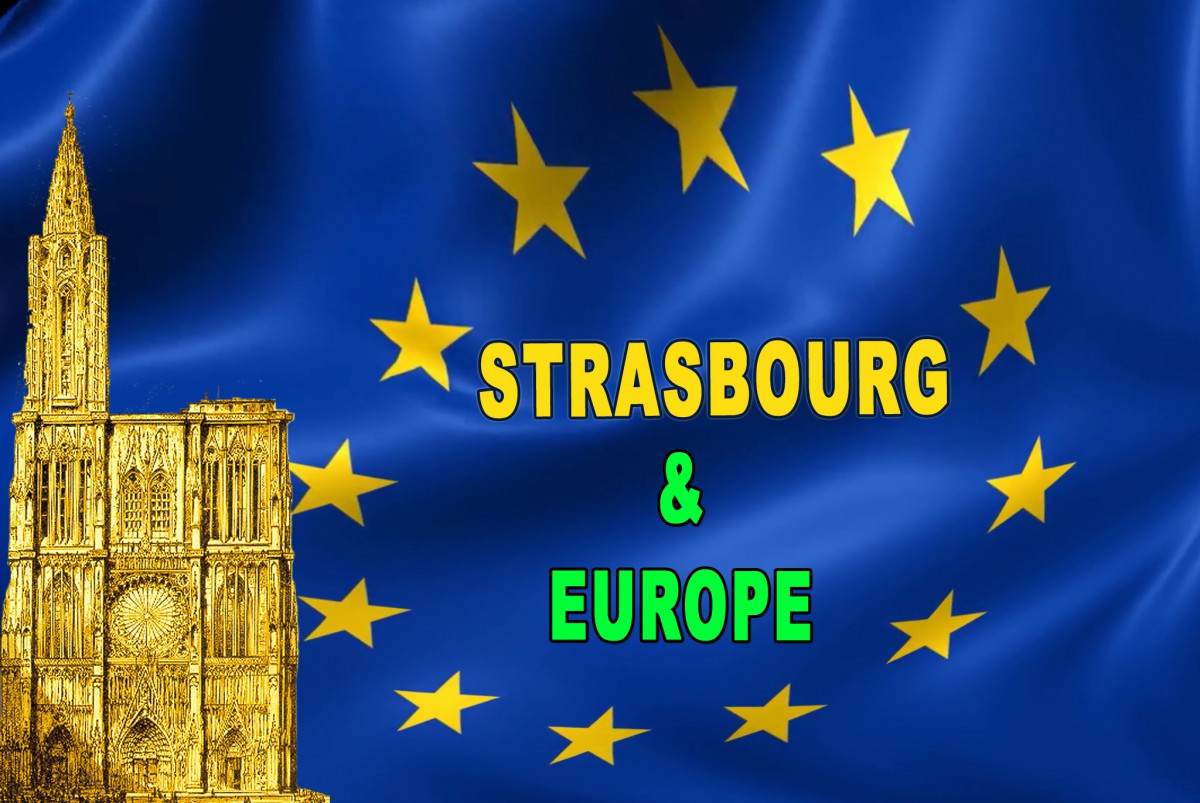
The end of the Second World War signalled that it was time for the reconstruction and reconciliation of the peoples of Europe.
Four years after the end of the Second World War, ten European States (Belgium, Denmark, France, Ireland, Italy, Luxembourg, Norway, the Netherlands, the United Kingdom and Sweden) signed the Statute of the Council of Europe, an intergovernmental organisation founded on human rights, at St James’s Palace in London.
Lord Ernest Bevin, the United Kingdom’s Minister of Foreign Affairs, was the first to suggest making Strasbourg a symbol of European reconciliation. His proposition was based on choosing an average European city, and some perceived it to be a British manoeuvre designed to overshadow the central policies of the new initiative.
![European Parliament Strasbourg Hemicycle LR © Diliff - licence [CC BY-SA 3.0] from Wikimedia Commons](https://frenchmoments.eu/wp-content/uploads/2012/11/European-Parliament-Strasbourg-Hemicycle-LR-©-Diliff-licence-CC-BY-SA-3.0-from-Wikimedia-Commons.jpg)
Nonetheless, the European institutions have successfully navigated through the decades and are a part of Strasbourg’s cityscape and an essential part of Europe.
8. Strasbourg at the Dawn of the 21st Century

In 1988, the historic Grande Île of Strasbourg and the cathedral were listed as World Heritage Sites by UNESCO, thus contributing to the recognition of its rich historic past.
Following the introduction of the famous futuristic tram system in 1994, the arrival of the long-awaited East European TGV made the Alsatian capital one of the most easily accessible cities of North-Eastern France and the Upper Rhine.
At the start of the 21st century, Strasbourg became a modern and open city without renouncing its historic heritage. Cooperation efforts between this borderless city and its counterparts on the other side of the Rhine (the Eurodistrict with Kehl, Offernburg, Lahr and Achern) will make Strasbourg a leading metropolis in the Rhineland, with close to one million inhabitants.
Find out more about Strasbourg History
- Discover our pages on Strasbourg.
- Read more about Strasbourg History on Wikipedia.
- Learn more about Strasbourg on our French blog Mon Grand-Est.

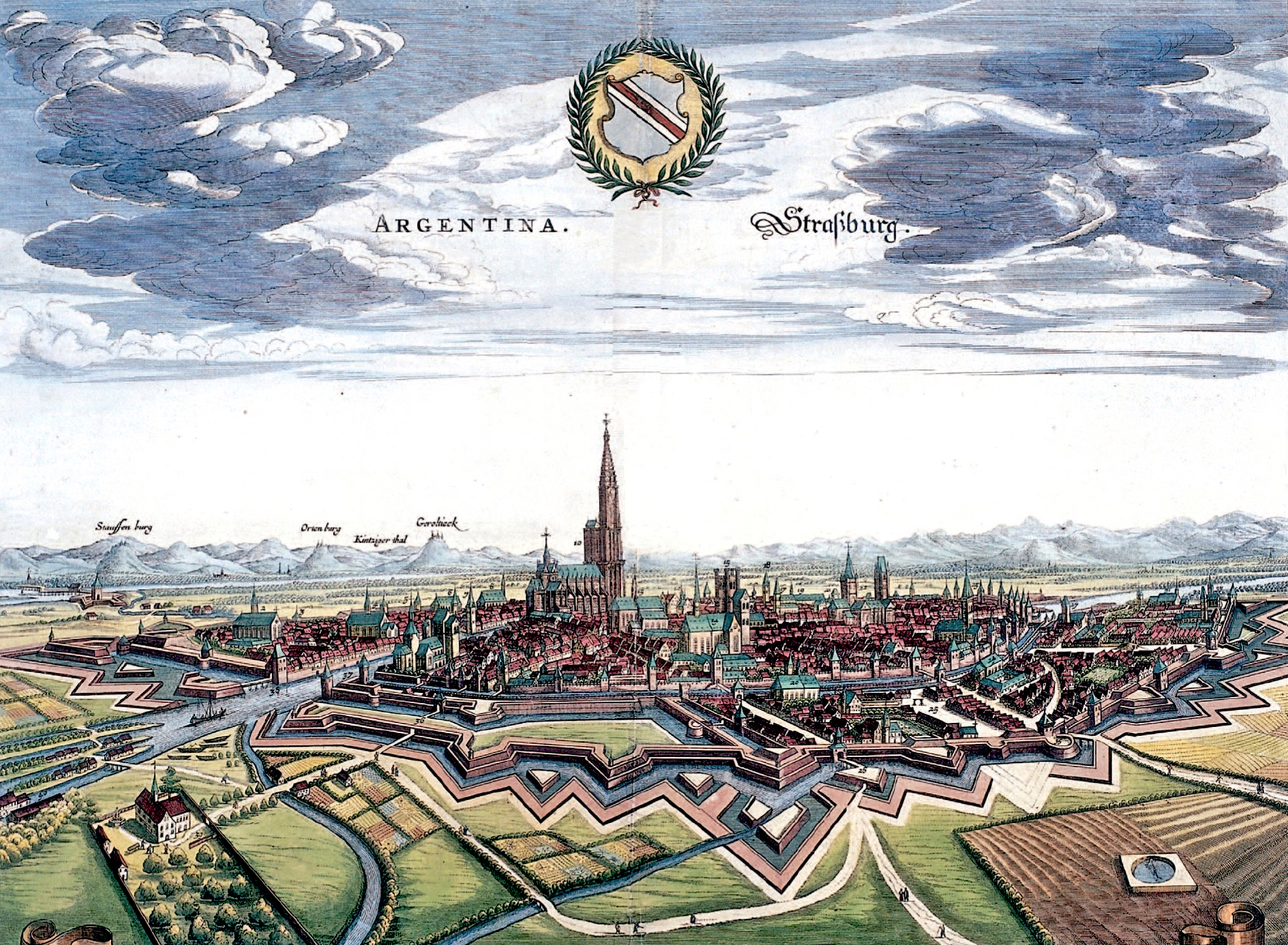


Enjoyed reading your summary of Strasbourg’s history.